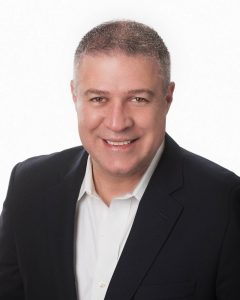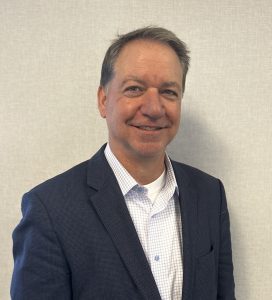 For the last year and a half or so, smart kiosks from LinkNYC have been popping up all over New York City replacing old pay telephones, each equipped with Wi-Fi, an embedded tablet, and large advertising panels. Behind it all is CityBridge, which itself is backed by a complex coalition of tech companies that includes Google parent Alphabet through its Sidewalk Labs subsidiary and Qualcomm. But in August, what had been a bit of an open secret finally got a little public recognition. Each of those kiosks is connected via the new fiber network being built from scratch by ZenFi. With us today to talk about ZenFi’s role in the project and its vision for the next generation of NYC’s fiber infrastructure is ZenFi CEO Ray LaChance.
For the last year and a half or so, smart kiosks from LinkNYC have been popping up all over New York City replacing old pay telephones, each equipped with Wi-Fi, an embedded tablet, and large advertising panels. Behind it all is CityBridge, which itself is backed by a complex coalition of tech companies that includes Google parent Alphabet through its Sidewalk Labs subsidiary and Qualcomm. But in August, what had been a bit of an open secret finally got a little public recognition. Each of those kiosks is connected via the new fiber network being built from scratch by ZenFi. With us today to talk about ZenFi’s role in the project and its vision for the next generation of NYC’s fiber infrastructure is ZenFi CEO Ray LaChance.
TR: So how many of these LinkNYC kiosk have been and will be deployed, and what kind of fiber infrastructure have you been building out for it?
RL: There’s going to be about 7,500 in all. Over 1,400 have been installed so far 2 years into the project with a goal of over 4,500 installed by late 2019. These are curbside street furniture locations with virtually unlimited bandwidth capacity. They are also in close proximity, so if you connect to one via Wi-Fi you can hand off to the next as you’re walking down any avenue in Manhattan providing continuous wireless coverage. They are in all five boroughs, even in Staten Island, and we’re hitting each one of those kiosk locations with dedicated fiber optic capacity. It’s been a huge success for the city and the consortium.
TR: Why does New York City need a new kind of metro fiber network to meet the demands of LinkNYC and future applications like 5G?
RL: Just try to imagine actually deploying 7,500 locations in New York, including virtually every single intersection within Manhattan. Previous networks weren’t architected for that level of fiber capacity and accessibility. To have everything in Manhattan — all 3,900 nodes — homed back to 111 8th Avenue is an architecture easy to envision but very hard to implement. You would end up with purpose-built network with no spare capacity. Fiber-to-the-home networks like, Cable TV networksand FIOS networks are built for such dense accessibility, but they’re also relatively low capacity. Legacy fiber networks are built with high fiber capacity, but have sparse accessibility. We had to architect a network that was both highly accessible and high capacity, a combination of the accessibility of cable TV and the high capacity of enterprise networks.
TR: So what does this new kind of network look like?
RL: We’ve put in 1728-count trunk cables, and we groom those down into multiple 576-count cables. Then, you can’t just run fiber all the way up 5th Avenue and put a splice case on every single intersection. There’s far too much congestion to allow you to leave splice cases and slack coil everywhere, and it would be phenomenally expensive. Our solution is a “network of neighborhood networks”. That means regions around the city will have their own colocation facility – we have 11 or 12 of them built around the city right now. Fronthaul fiber reaches out from those colocation facilities to antenna locations. In the case of LinkNYC these are Kiosks of course, but it could just as easily be pole tops or an in-building wireless system. That allows us to keep capacity local. Our fronthaul network has an access component that is designed to allow us to groom in a lateral in every manhole. We don’t have to double back and rent a bunch of parallel ducts to get back to a survey manhole. We basically turn every manhole we traverse into a survey manhole with some very interesting cable technologies we have developed ourselves.
TR: How has the LinkNYC project affected your original buildout plans for a network architected for C-RAN and the future demands of 5G?
RL: The LinkNYC project is a long-term deal and is definitely a huge anchor to take our vision and actually put it to the test. We’re now building exactly what we said we were going to build even before we started the company. The hub locations are a bit different, but the high-capacity, highly accessible fronthaul access network is the same. When we started the company in 2014, we didn’t envision such an opportunity.
TR: So how much fiber have you rolled out so far in the NYC metro area?
RL: We’ve built about 1.5M linear route feet of network over the past two years. We are deployed in all five boroughs — whether it’s a pole top, macro site, or some other street furniture, we can groom those onto our network in a heartbeat. We’re about halfway through buildout from a raw footage perspective. It will be the densest, highest capacity network in the city.
TR: Beyond the fronthaul architecture, what new technologies are you putting to work building this network and why?
RL: We were the first in the US to take delivery of 1728-count Spider Web Ribbon cable from AFL, which has a lot of fibers in a very small diameter cable – smaller than a traditional 864-count cable. It enables us to put twice the capacity in the same space or less than we would have put it in a year or two ago. We’ve also done some really unique hybrid cable designs that we developed ourselves. The other guys are still building the legacy way, so even if they are focused on wireless they are using traditional methods or low capacity cables and will have costly operating expense models where they rent a lot of parallel ducts. We’ve done a lot of things to take the cost out of our network build on the front home that are really unique.
TR: What other opportunities do you see going forward for your network infrastructure?
RL: Beyond the outside street furniture opportunity, we also see C-RAN supporting fiber for in-building wireless applications. Rather than putting in basement processing there you put it back in our colos. Then you can pick up all the class B and C buildings in the city, aggregate them, and deliver millions of square feet to the mobile operators. We think we can do the next generation stuff more cost effectively with higher capacity, but we can also do legacy stuff because our network can just as easily support a sparse connectivity environment. We are selling actively into carrier wholesale, enabling others to build value-added networks on top of our infrastructure. The application is where people can get creative, but they don’t necessarily want to own the underlying fiber asset.
TR: Manhattan’s ducts have always been a crowded place. How much room is left?
RL: The city is running out of duct capacity. Nobody’s building as big a network as we’re building at this point, and I think there’s going to be very few opportunities for another big build because we’re often taking the last empty duct and even having to remove cables from time to time. It is very costly right now to build in New York just because of congestion. But I think we’re being smart about this by putting very high capacity in every duct we take. So we’re not going to run out anytime soon.
TR: How do you see the densification of wireless networks happening?
RL: The densification of wireless is going to happen. The next step we will see is fiber to an antenna that serves other antennas wirelessly. My thesis is we need an antenna on every street corner and a cell site on every floor of every office building, every hotel, and residential building. We need cell sites everywhere. But you don’t necessarily have to run fiber to all those cell sites. The fronthaul can be finished off with a wireless antenna-to-antenna circuit. So I think we’ll start doing a lot of endpoint distribution using wireless at the end of our fiber runs.
TR: Thank you for talking with Telecom Ramblings!
If you haven't already, please take our Reader Survey! Just 3 questions to help us better understand who is reading Telecom Ramblings so we can serve you better!
Categories: Industry Spotlight · Metro fiber · Wireless





Im surprised no majors have had outages due to pulling through some of these congested areas.
Space? I see a providers like Lightower, Attice and Stealth) still deploying across nyc everyday, I doubt there is a space constraint.